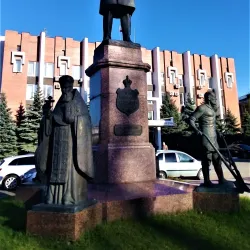Traffic in Saratov
In 2024, Saratov's transportation landscape is dominated by walking and bus travel, each accounting for a third of the commuting methods.
Despite the reliance on public transport, the city faces challenges with CO2 emissions and traffic inefficiency.
Average Commute Times
The average commute involves 5 minutes of waiting, 5.45 minutes of driving, and a total travel time of 40.27 minutes.
- Bus - Bus commuters spend an average of 6.25 minutes waiting and 52.5 minutes on the bus, covering a distance of 10.5 km.
- Car - Car users experience a 20-minute drive with minimal waiting, traveling approximately 5.67 km.
- Walking - Walking involves 7.5 minutes of waiting and 17.75 minutes of walking, covering a distance of 1.58 km.
Traffic Breakdown
Traffic Data
Overall average travel
Average when primarily using Bus
Average when primarily using Car
Average when primarily using Walking
More Information
Seasonal Trends
Winter months often see increased traffic congestion due to adverse weather conditions.
Summer tends to have lighter traffic as many residents take vacations.
Commuter Pain Points
Long waiting times for buses can be frustrating for commuters.
Traffic congestion during peak hours leads to delays for car users.
Best Travel Times
Early mornings before 7 AM and late evenings after 8 PM are ideal for avoiding traffic.
Midday travel between 11 AM and 1 PM is generally smoother for public transport users.
Event Impacts
Public events in the city center can lead to significant traffic disruptions.
Planning alternative routes during major events can help avoid delays.
Sustainability Efforts
Saratov is investing in expanding its public transport network to reduce reliance on cars.
Initiatives to promote cycling and walking are underway to lower the city's carbon footprint.
Ride-Sharing Impact
Ride-sharing services are gaining popularity, helping to reduce the number of cars on the road.
These services provide a flexible alternative to traditional public transport, especially during off-peak hours.



















